Born bad finds his place in the great war
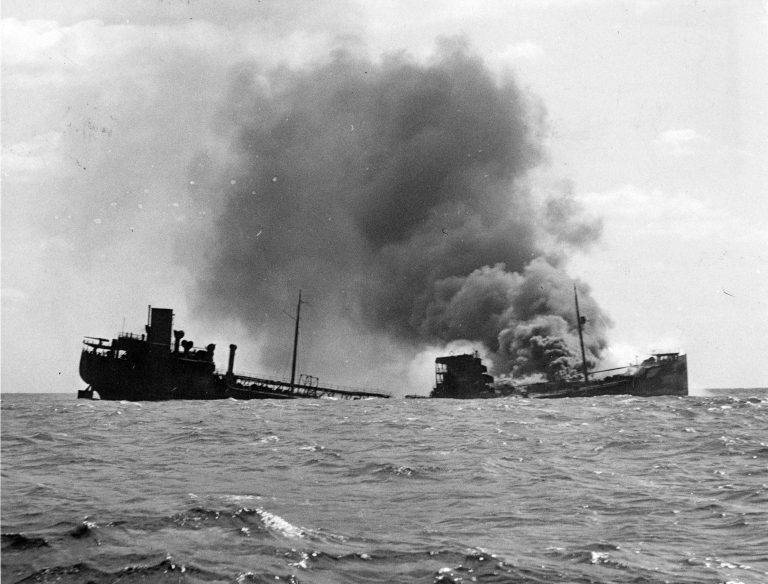
Broken after being hit by a German torpedo, the tanker RP Resor burns off the coast of New Jersey, February 28, 1942. The smoke was clearly visible to residents of coastal settlements. In 1942, ships burning on the horizon were often a reminder to US citizens of the impotence of their armed forces in the fight against German "underwater killers".
At the beginning of 1942, the situation with resistance to German submarines in the territorial waters of the American Atlantic coast was simply catastrophic. Anti-submarine defense essentially did not exist. The Germans sank ships right off the coast of the United States, landed spies, there were cases of shelling of the American coast by submarines from the surface. Before the war, many US military believed that German submarines simply would not be able to reach the shores of the United States, and if they could, then their effectiveness would be low. It was a fatal mistake.
Back in 1938, the US Navy launched the Experimental Small Vessels program, under which projects and submarine hunters were developed. But things did not go quickly, so by the time the first bombs fell on ships in Pearl Harbor, the US Navy had a whole ... one specially built anti-submarine ship. Vessels have already been laid down, which later became the ancestors of entire series of submarine hunters, but they will only enter service in 1942.
С aviation things were also not very good, and the underfunding of the US Air Force, and the traditional opposition of officials fleet army aviation when it came to anti-ship and anti-submarine defense of territorial waters.
In the summer of 1941, the US Army Air Force had 120 heavy bombers and a little more than 900 medium, light bombers and attack vehicles, none of which was intended for operations to search for and destroy enemy submarines. By December 1941, the number of aircraft increased, but not significantly, and there were no specialized anti-submarine aircraft, so they did not appear.
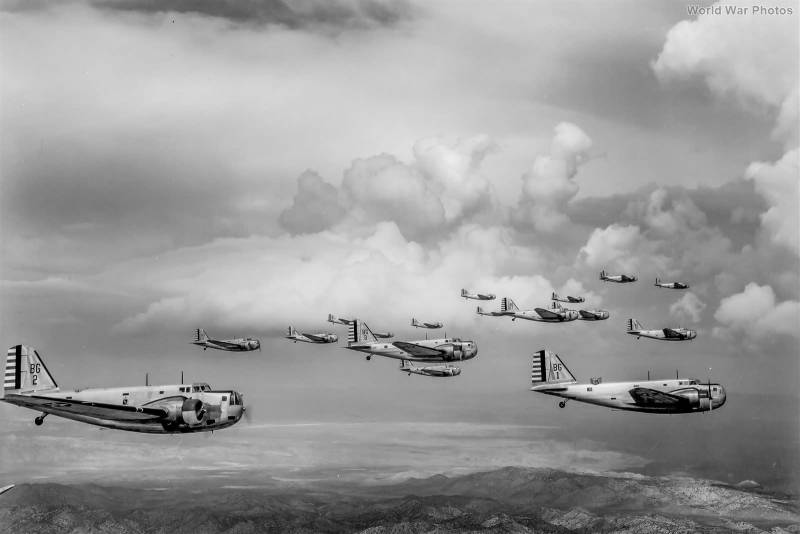
Formation of B-18 bombers of the 7th Bomb Group in the San Francisco Bay Area, September 18, 1938. The 7th Group was the first unit to enter service with the B-18, in 1938 it was the newest aircraft of the US Army Air Force.
At the beginning of 1942, everyone joined the fight against submarines as best they could and with what they could. The US Navy used soft balloons, the US Coast Guard used training sailing vessels for anti-submarine patrols, the Civil Air Patrol was created, whose aircraft also helped search for submarines and at some point even carried weapons (but more on that in another once). Dönitz and the US Army Air Force joined the fight against wolf packs. And like almost any structure of the US Armed Forces at the beginning of World War II, it turned out that there was neither the strength, nor the means, nor the developed tactics to carry out new tasks.
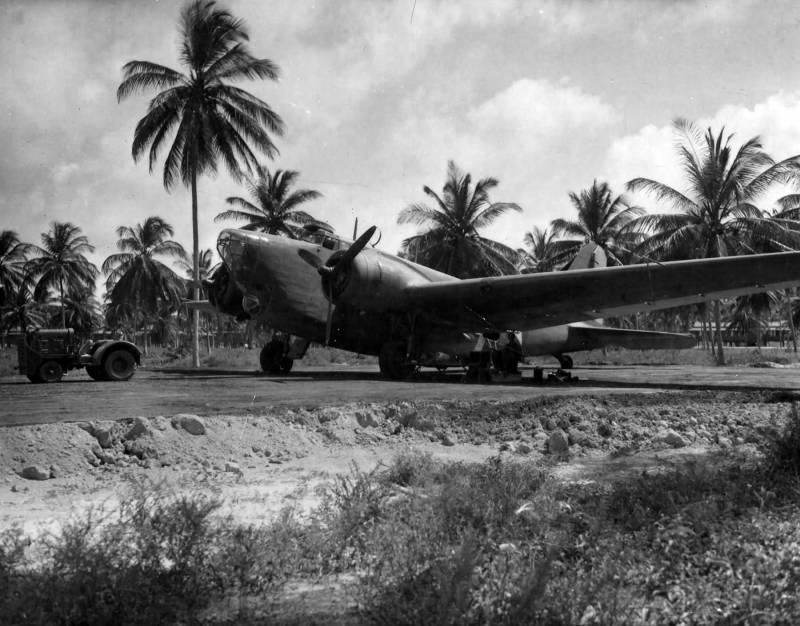
B-18A at the US Air Force airfield in the Panama Canal zone, 1942.
Among other things, it turned out that German submarines, like a cancerous tumor, spread throughout the Atlantic Ocean and began to operate in the Gulf of Mexico and the Caribbean Sea. At the beginning of 1942, American army pilots of reconnaissance and bomber squadrons begin to fly anti-submarine patrols as they are, on unprepared aircraft, without specialized weapons.
At the beginning of 1942, anti-submarine squadrons began to form, but at first simply by assigning new names to bomber units that were already engaged in the search for submarines. Materiel and personnel are sorely lacking. For example, the 45th bomber squadron, which flew anti-submarine patrols in 1942 from the Panama Canal zone, initially had only two navigators, and had to make up to 7 sorties per day. Navigator's functions were simply assigned to someone from the crew, sometimes the co-pilot, sometimes the technician.
The 76th bomber squadron became the 1942rd anti-submarine squadron in May 23. At the time of its “reformation”, the unit was armed with one B-18, one B-23 (Douglas B-23 Dragon), one B-25 (North American B-25 Mitchell) and a dozen A-29s (Lockheed A-29 Hudson ). Not a single aircraft had specialized means of detecting submarines and anti-submarine weapons.
Specialized anti-submarine aircraft
It was clear that a specialized anti-submarine aircraft was needed, and it was needed here and now.
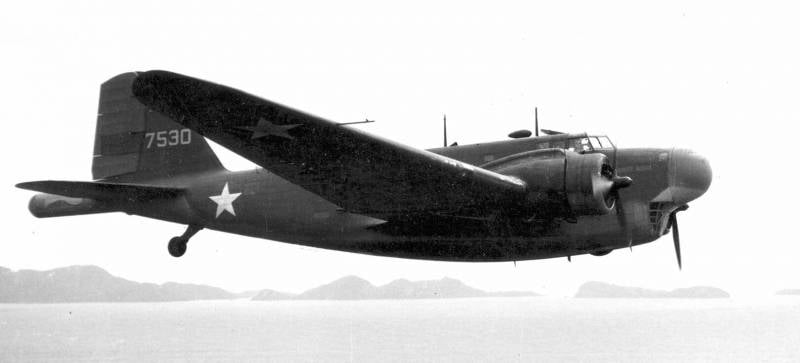
Anti-submarine B-18B (former B-18A number SN 37-530) of the US Army Air Force in flight over the sea, July 1942. Instead of glazing the scorer's cockpit, the radome of the SCR-517A radar antenna is visible, and in the tail is the magnetic anomaly detector (MAD) antenna.
Thanks to the British, the Americans already had radar technology at their disposal, and even a working SCR-520 aircraft radar. But when the problem of the dominance of German submarines in the territorial waters of the United States arose in full growth, it was decided to urgently develop an aviation radar for detecting surface targets based on the SCR-520. This is how the SCR-517A radar appeared.
But on which plane to put it?
As of the beginning of 1942, the choice was not rich. Many types of aircraft were just beginning to enter service with the US Army Air Force. Those aircraft that were very well suited for such tasks, for example, the B-24 (Consolidated B-24 Liberator), already used in the role of anti-submarine by the British, were available in ridiculous quantities. So the choice fell on the B-18.
These aircraft had several advantages, they were available in sufficient numbers, they were already frankly outdated and could be used for patrol purposes without taking it away from other tasks, and most importantly, as of December 1941, it was the most numerous bomber at air bases outside the United States , and the squadrons manned by them were already engaged in anti-submarine patrols. That is, the materiel was available in sufficient quantities and was mastered by the pilots, and most importantly, it was not particularly needed anywhere else: ideal.
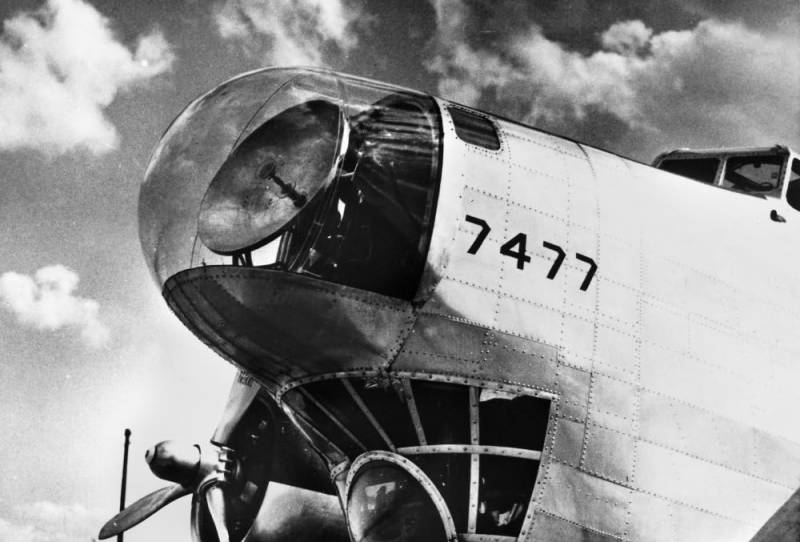
One of the first B-18A modified into an anti-submarine aircraft. In the plexiglass fairing in place of the former bombardier's cockpit, the SCR-517A radar antenna is visible.
Firm Douglas (Douglas Aircraft Company) won in 1935 a competition to build a new bomber for the army in general due to the fact that he offered the cheapest car. The army during the still ongoing Great Depression could not afford to spend a lot on rearmament. In fact, it was a conversion of her own successful passenger liner (Douglas DC-2). Thanks to this, the car came out cheap, and its production could be quickly deployed.
All the minuses of the bomber also followed from this: a small bomb load, low speed, and unsatisfactory defensive armament. By 1940, when the serial production of these machines was completed, they were already outdated and could not compete with their classmates from other countries in any of the key characteristics.
But the car turned out to be reliable and easy to drive. In addition, the Americans had before their eyes an example of the successful use of these same machines as specialized anti-submarine aircraft. In 1940, 20 B-18s were transferred to Canada. There, the machines, designated Digby (Douglas Digby Mk. I), were used precisely in the anti-submarine role.
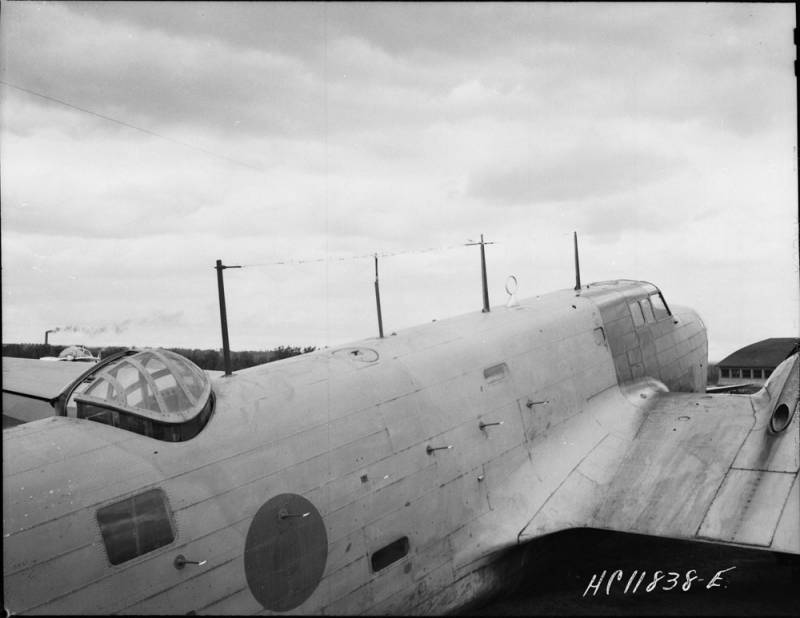
Canadian Douglas Digby Mk. I 751 Squadron, Royal Canadian Air Force, Ottawa, October 1941. On the fuselage of the aircraft, the antennas of the Mk. II. Above - transmitting antennas, on the side - receiving.
The first B-18As were equipped with radars in the spring of 1942. On March 27, 1942, tests were carried out, the anti-submarine B-18 was supposed to detect the American submarine USS Mackerel on the surface using radar. The tests were successful, the submarine was discovered at a distance of 19 miles. In early April 1942, the first 10 anti-submarine B-18s were transferred to the First Sea Search Attack Group, a US Army Air Force unit created to test aircraft detection systems for submarines and anti-submarine weapons.
The aircraft were transferred "for further testing", but in fact it was no longer a test, but a full-fledged combat use. Moreover, the combat work was very intense, everyone understood that the problem of countering submarines was more than acute, everyone understood and literally saw this, and other aircraft capable of searching for and attacking submarines at any time of the day and in almost any weather conditions were at the disposal of the Army Air Force The US didn't exist at the time.
This is how the pilot of the First Naval Search and Strike Group describes one of the patrol sorties in the early summer of 1942:
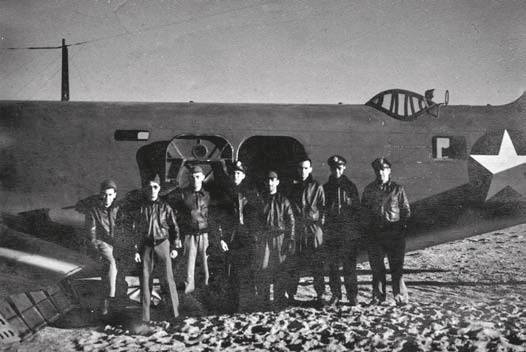
If you got off the plane on your own two feet, then the landing was successful. The crew of one of the B-18Bs of the First Naval Search and Strike Group after an emergency landing on the beach near Langley Air Base, 1942.
Magnetic Anomaly Detector
But it's one thing to find a submarine on the surface of the water, but then she submerged, and then what?
Technologies from the mining industry came to the rescue, namely the magnetic anomaly detector (MAD). The technology, already used in geological exploration, migrated to anti-submarine defense aircraft.
The problem was that the detector could detect a submerged submarine only if the plane was strictly above it, so the question arose, how to attack the target in this case if the depth charges dropped from the plane fly forward and the target remains behind?
The answer was the so-called "retrograde bombs" (retro bombs) - small depth charges fired by a pyrotechnic charge along the guides in the direction opposite to the movement of the aircraft. At the moment of passing over the target and receiving a signal from the magnetic anomaly detector, an automatic reset system was activated, and small depth charges dotted the space behind the aircraft, where the submarine should have been.
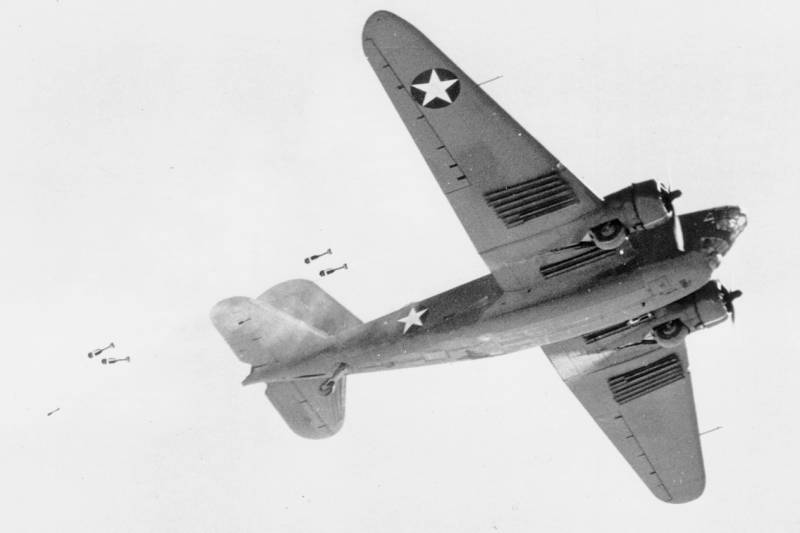
Test firing with retrograde bombs from a B-18A bomber, 1942.
The production of the SCR-517 and SCR-517A radars (the first - originally made for the search for surface targets, the second - the conversion from the radar for detecting air targets) went very slowly. In addition, they had to be divided between the army and navy, and the British also asked for these radars.
But the “experimental” B-18s of the First Naval Search and Strike Group showed good results, in the first three months 11 targets were found, 6 attacks were made, and three submarines were declared as potentially sunk, all at night or in bad weather conditions. True, post-war studies did not confirm a single sinking.
At the end of the summer of 1942, it was decided to convert 122 B-18A into anti-submarine aircraft (model B) by installing radars for detecting surface targets. Of these 122 machines, 79 were additionally equipped with magnetic anomaly detectors.
In the fall of 1942, anti-submarine B-18Bs began to enter units based at airfields in the Caribbean. This happened more than in time, since the B-18 and B-18A available there were close to exhausting their resource for almost a year of intensive combat work.
In the autumn of 1942, the first confirmed sinking of a German submarine by an army B-18 took place. An aircraft from the 99th Bombardment Group, piloted by Captain Howard Burhanna Jr, attacked with depth charges and sank U-512 off the coast of French Guiana. True, luck smiled at the usual B-18A, and not anti-submarine.
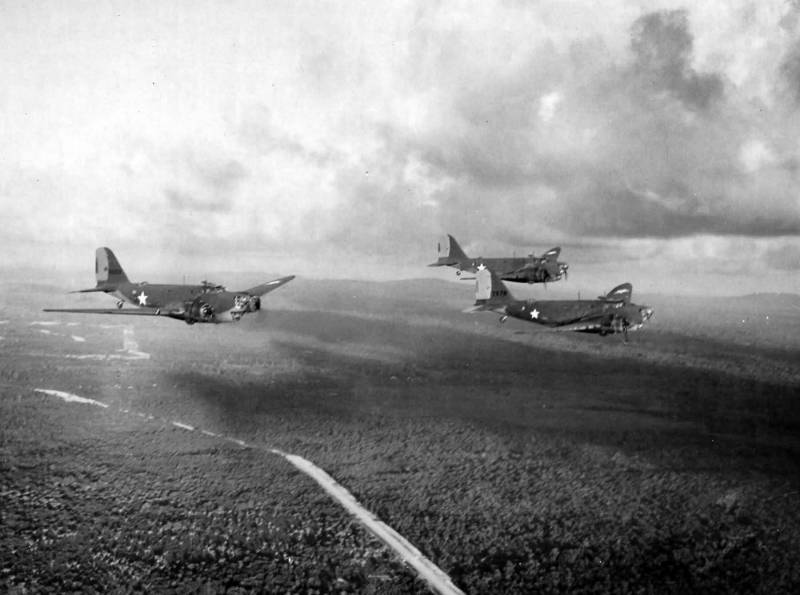
A flight of B-18As of the 99th Bomber Group in flight near their base in Dutch Guiana, 1942.
During the war, a couple of submarines were chalked up to Canadian B-18s.
Another country in whose Air Force the B-18 fought in the anti-submarine role was Brazil. The Brazilians received the first two cars in April 1942. At first, mixed American-Brazilian crews flew on them, there was no time to study at the desks, it was necessary to immediately fight the wolf packs of Dönitz. Subsequently, the Brazilians began independent patrols by single aircraft. On May 8, 1943, a Brazilian B-18 attacked U-154 with depth charges, but was not successful.
In total, the Brazilians were supposed to receive 4 aircraft, but one was not supposed to be combat, but from the very beginning it was used as a stationary "allowance", and the fourth in 1945 crashed while en route from the USA. Actually, the Brazilian B-18s became the last aircraft of this type that remained in service. As part of the Air Force of this country, they flew until 1946, however, none of the aircraft transferred to them was anti-submarine.
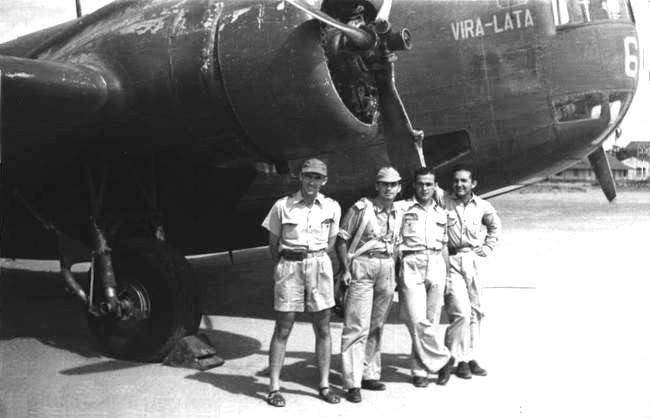
The crew of the Brazilian B-18 at their plane with the proper name "Vira lata" (mongrel), 1943.
During the use as a patrol and anti-submarine, the B-18 showed one interesting feature - it kept perfectly on the water after splashing down. There is a known case when a splashed down US Air Force B-18 stayed on the surface of the water for ... a week. The plane not only did not sink, but was towed to the shore and raised to land. This is a kind of record for American non-specialized aircraft (not seaplanes) for being on the surface of the water.
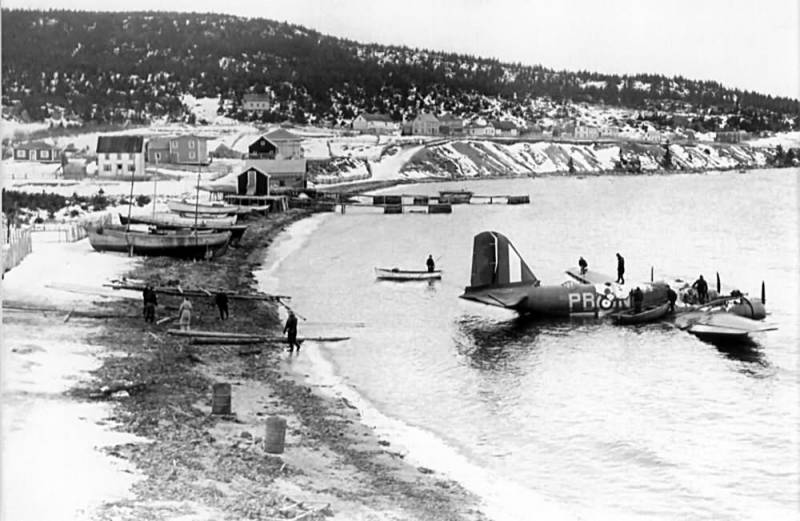
The Canadian Douglas Digby Mk. I swims calmly near the shore, waiting to be pulled onto land.
The peak of the use of anti-submarine B-18B came at the end of 1942 - the beginning of 1943. The swan song of these aircraft was also the beginning of their end. The American industry, which quickly got up on a war footing, increasingly produced new weapons, equipment and equipment. Already in 1942, the SCR-517A radar was installed on the first two B-24s of the US Army Air Force. B-18 and B18B turned out to be needed as a temporary measure, until they were replaced by more advanced machines.
Although these aircraft were used as trainers, transports and messengers until the very end of the war, their fame as submarine hunters ended in 1943. Although for this aircraft it was an excellent result. The machine, which entered service due to its low price and was already obsolete by the time it began to enter the unit, found its specialized niche during the war and fought until 1943, bearing the burden of anti-submarine patrols by the US Army Air Force on its shoulders at the most critical moment for America confrontation with the submarine forces of the Kriegsmarine.

A flight of B-18As returning from an anti-submarine patrol, 1942.
Information